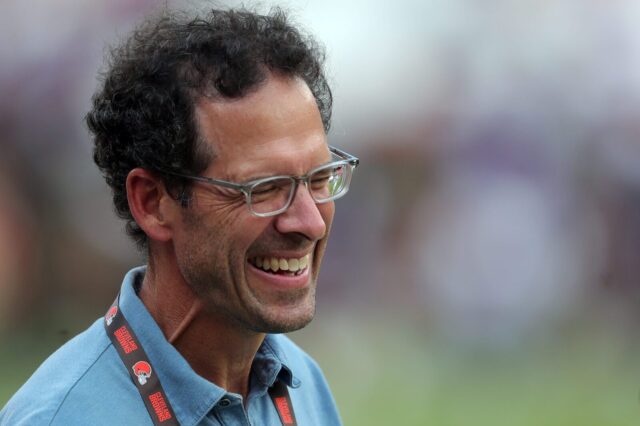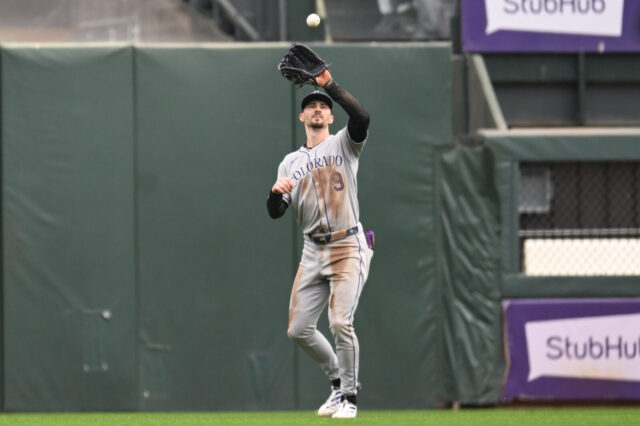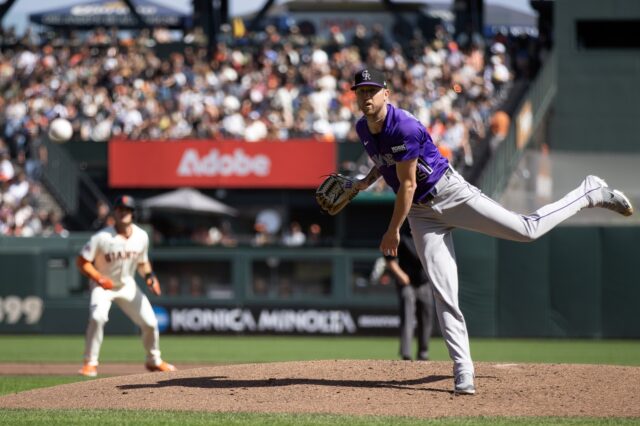Inside the building at 20th and Blake, the Colorado Rockies have always had a firm and sound corporate policy when it comes to their employees: They’ve always promoted from within. Hire good people for lower level jobs and have them work their way up. Most current Rockies employees have done it that way – some better than others, but all with the understanding that this is how the organization does things. A lot of people have been rewarded for loyalty and hard work.
The 2015 season is the time for the club to hold firm to that philosophy on the field, as well. That means not promoting high-profile pitching prospects Eddie Butler and Jon Gray to the big-league team before they’ve paid their minor-league dues in full.
Given their strong spring performances, there’s plenty of public sentiment to see Butler and Gray on the big club right now. But that comes from people who don’t understand the process and what’s best for sustained success.
It’s not just about the “now.” It’s about the long term. And for the long term, it’s in everyone’s best interest, including the players, for both Butler and Gray to spend the full 2015 season in triple-A Albuquerque.
This is not going to be a playoff season for the Rockies. Most observers understand that and accept the idea that finishing the season with a .500 record would be a very positive step forward. Questions remain about the long-term health of their two star players, Troy Tulowitzki and Carlos Gonzalez, each of whom has played a full season (500-plus at bats) just once in the last four years.
Even after the departure of Jhoulys Chacin, the pool of starting pitching candidates remains stocked with the type of arms that would fill the Nos. 3-4-5 spots in a playoff team’s rotation. They aren’t overtaking the Dodgers, Giants and even the Padres with their current roster. Including Jorge De La Rosa, this team does not have a playoff caliber No. 1 or No. 2 starting pitcher on the roster. And De La Rosa will most likely start the season on the disabled list.
And that’s okay. It doesn’t mean this is a “rebuilding” year, to use the term Mike Shanahan used to loathe. Rebuilding means starting over, from scratch. These Rockies are past that. The project has already begun. They are continuing to build. Colorado has a very solid – if not terrific – everyday lineup, especially defensively, where they could (health permitting) start three Gold Glove winners on the infield and another in the outfield on opening day. And don’t forget about the defending National League batting champion starting at first base. The bullpen could be solid (if not overworked.) The starting rotation will feature veteran Kyle Kendrick, along with a couple of young guys who made a solid impression last season in Tyler Matzek and Jordan Lyles.
Yet, this remains a key developmental season for a lot of players (and coaches, including new pitching coach Steve Foster and bullpen coach Darren Holmes.) They’ve acquired several young pitchers that are further ahead, experience-wise, than Butler and Gray that they need to find out about. Can David Hale and/or Brooks Brown, whom they got from Atlanta, be difference makers? What about holdovers Christian Bergman, Chad Bettis and Christian Friedrich? Who can be a Rockies stalwart moving forward?
It’s time to see what these guys have, and if they can stay off the disabled list, which has been a big bugaboo the past several years. Can any of them put in full, productive seasons? For these guys, Coors Field is the place to find out.
As for Butler and Gray, they’ve yet to even cut their teeth at the triple-A level. Butler has pitched a total of 5.3 innings at AAA, posting a 10.13 ERA. Gray won 10 games at AA Tulsa last year, but has only pitched at higher altitude once before when he began his professional career at short season Grand Junction. He’s never sniffed AAA.
Butler was mismanaged a season ago. He was not 100 percent physically when the Rockies called him up from the pitcher-friendly confines of double-A Tulsa last June, throwing him out at pitcher-unfriendly Coors Field to face the really unfriendly Los Angeles Dodgers. The results were disastrous (10 hits, six earned runs over five innings in a loss) short term and long term. After missing several weeks with that sore shoulder, Butler’s season limped to the finish line.
Gray was better cared for – coddled even – and has not had health problems to this point, a major plus for him. Still, he hasn’t been tested yet, maxing out at 124 innings last season.
For them, Albuquerque (elevation 5,312 feet) is the place to find out how each can handle the physical and mental demands of these unique elements, which are ever present at Albuquerque and Denver. It’s certainly true that many players have made the jump directly from double A to the big leagues and done well. But when you’re talking about Colorado Rockies pitchers – perhaps the most demanding position in all of Major League Baseball – special attention and training is required.
This team has to be able to count on their best pitchers handling more difficult playing conditions, including altitude, drier climates and a hitter’s park. They not only have to pitch effectively – even dominate – in the minors, but they have to stay healthy and show that they have conditioned themselves to go out there every fifth day all season and give their team 7-plus quality innings.
If Butler and/or Gray can put up a full, solid season at Albuquerque – meaning 20-25 starts, 160-plus innings pitched, double-digit wins and good strikeout-to-walk ratios – then a year from now we can talk about one or both not just making the team out of spring training, but leading the pitching staff – and team – to far greater heights.
Then, and only then, will the Rockies be a serious playoff contender.



